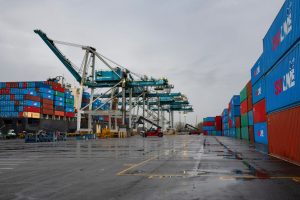Portland’s next earthquake will hurt the unready
Published 11:21 am Wednesday, February 8, 2023

- The Cascadia Subduction Zone off the coast of North America spans from northern California to southern British Columbia. This subduction zone can produce earthquakes as large as magnitude 9 and corresponding tsunamis.
An earthquake like the one on Feb. 6 in Southern Turkey and Syria would bring devastation and death to the Portland region. The Cascadia Subduction Zone earthquake is set to be much more violent than anything the San Andreas fault in California can deliver. Oregonians should be prepared, especially those living in cities.
Most of the Willamette River bridges are probably not usable after an overdue earthquake they dub The Really Big One. The newer bridges — Sellwood Bridge and Tilikum Crossing — are built to withstand a Cascadia scale 9 earthquake, but the rest could easily break up and fall into the water. As well as collapsing buildings, downed power lines, fires, gas leaks and flooding will be a hazard for days.
Trending
Read the Oregon government’s 341-page report on how to prepare for a big earthquake here: The Oregon Resilience Plan.
There’s plenty to worry about:
The Critical Energy Infrastructure Hub (those chemical tank farms in Linnton) is at risk of spilling millions of gallons of fuel into the Willamette, according to a 2020 study Multnomah County and Portland commissioned in 2020 about the hub.
Solution: keep your windows closed in Northwest Portland if the wind is blowing south.
More than 1,600 unreinforced masonry (or URM) buildings around the city are at high risk of collapse.
Solution: if not braced with new steel skeletons, avoid masonry buildings, inside and just outside.
Trending
The water distribution system will fail. The Portland Water Bureau is a leader in planning for earthquakes. But after Cascadia, the goal will be to get water to major hubs, such as hospitals. Forget about water coming out of the tap.
Solution: store a few water cooler bottles in your closet and ideally a 50-gallon barrel in your garage.
The power will go out, and stay out in some areas, for months.
Solution: keep your batteries charged, and buy candles.
Many newer buildings will still be standing but severely damaged. It will be unsafe to go back inside many structures.
Solution: plan to shelter with friends and family, or seek out congregate shelters.
Phone lines will immediately be overwhelmed.
Solution: satellite phones will still work, as well as walkie-talkies and shortwave radio.
People will struggle to travel home from work or school and many families will be separated for a time.
Solution: pick a place to meet now, and keep a bicycle and bike trailer ready for action.
Emergency workers have families, too, and will need to make sure their loved ones are OK before they come to work. Then, it’s going to be hard to come to work.
Solution: study first aid and organize a preparedness group on your block. Neighbors will be able to render aid before emergency services. Portland has the largest Neighborhood Emergency Team program in the USA. More than 2,000 residents are ready to be first responders in their own neighborhoods after an earthquake. These people are ready. And you could be one of them.
Recovery will take years. It will be rough going in Portland for many months.
Solution: elect proactive officials.
Jonna Papaefthimiou, Chief Resilience Officer at the Portland Bureau of Emergency Management, offers these other positives for earthquake survival:
“Every household has the capacity to prepare. Making a meet-up plan with your loved ones doesn’t cost anything, and can improve peace of mind in all kinds of disasters. You can also build a kit, retrofit your house and prepare for specific hazards.” Information and templates are available online: publicalerts.org/get-ready.





